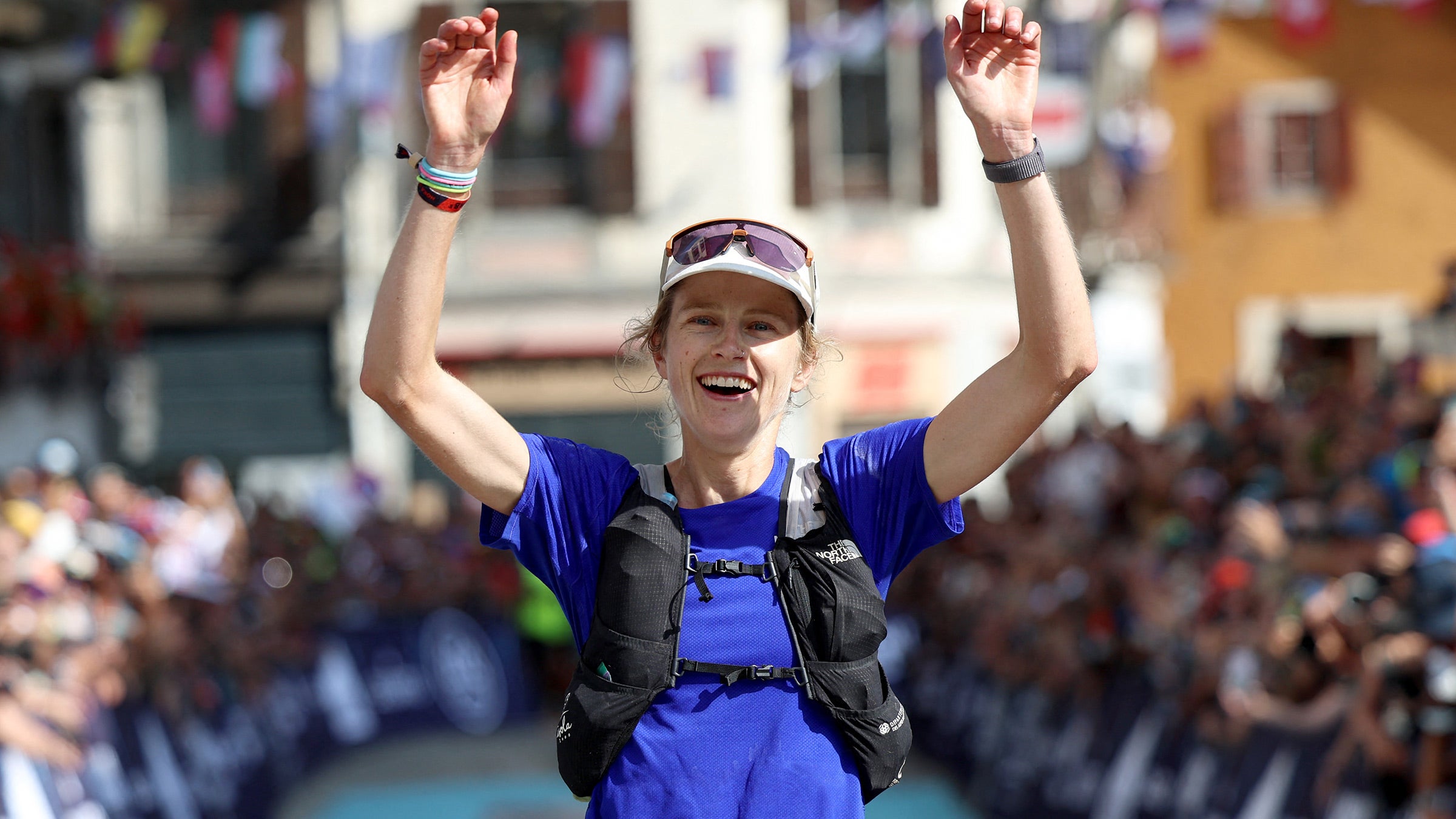American ultrarunner ��is still recovering from her eye-popping effort��last weekend at France’s Ultra-Trail du Mont Blanc. Schide, 32, in 22 hours, 9 minutes, and 31 seconds, slashing��nearly 21 minutes off of the course record, set in 2021 by Courtney Dauwalter.
When I read about the accolade, I immediately thought of Dauwaulter’s aura in women’s ultrarunning. In recent years she’s been ��untouchable at the biggest events: Western States Endurance Run, Hardrock 100, and UTMB. In 2023 �����ԹϺ��� contributor Meaghen Brown called Dauwalter a “once-in-a-generation athlete” and “the best female trail runner ever to live.”
Well, Katie Schide’s UTMB record is a sign that she’s approaching Dauwalter’s level. I recently spoke to her about chasing after ultrarunning’s GOAT.
OUTSIDE: You won the Western States 100 in late June and then turned around and won UTMB on September 1. What did your recovery and training look like between the two events?
Schide: First, I do not think running these two races in the same season should be considered normal. I never thought I’d race them in the same year, and I don’t think it sets a great example to do two big races so close together. That said, I do think the sport has evolved quite a bit in recent years and the way in which we train before and fuel ourselves during races have allowed people to recover faster. My first UTMB was in 2019, and now, five years later, I have a much better sense of how my body reacts. So, I took an entire week off after Western States. I traveled back to Europe, and adjusting to the time change alone took a week. Then I had another week with easy jogs, maybe 30 to 40 minutes. Then I started to get back to my normal training. I traveled to Chamonix six weeks before UTMB and I was back to my normal training for three weeks and then it was time to taper again.
A lot of American ultrarunners live in the Rockies, or in communities with other runners, coaches, and training groups. You live in Saint-Dalmas-le-Selvage, a tiny village of 60 inhabitants in the Alps. What advantages and disadvantages does your location have?
The biggest advantage is there is really nothing else around here so there’s nothing to do other than train and rest. Living here truly allows you to rest. On a rest day you can’t also go get coffee with a friend, and then go to the bookstore and the grocery store. If I have a rest day, there’s really nothing I can do except sit on my couch and maybe go for a little walk around the village. I love going out for fancy coffee when I’m in a city, but it’s not the lifestyle I need every day. Living here gives us (she lives with her partner, professional ultrarunner Germain Grangier) quiet and allows us to disconnect.
And the disadvantages—we don’t have many healthcare resources here, so if I want to see a physio or get a massage, it’s an hour and a half drive. Our grocery store is also an hour and a half away. That makes us really have to plan ahead. When I was training in Flagstaff, Arizona before Western States, it was so easy to go see a masseuse when I needed one. But these disadvantages go hand-in-hand with the advantages,��so it’s a trade-off you have to choose.
Courtney Dauwalter has received a glut of mainstream media attention over the past few seasons. Has your view of Dauwalter changed as you’ve progressed in the sport?
Courtney’s been there since the beginning of my ultrarunning career, always raising the bar higher than any of us were ready to go at any given time. I first raced against her in 2019 at UTMB when she reset the standard of women’s racing. I remember sharing a few footsteps with her at that race, and her telling me that I would love my first 100-miler, and I was absolutely hating it. She also been a great ambassador for the sport and has brought a lot of non-endemic eyeballs to ultrarunning, which we can thank her for. What she’s done benefits everyone. She redefined what I thought was possible in these races, and because she was so far ahead of the other women, I think we all recognized the gap between us that needed to be closed.
Did it seem possible to narrow Dauwalter’s margin?
I never thought of my end point as getting within reach of her. But when you saw the margin between her and the other women, there was definitely space. I was like there shouldn’t be this much space between us, so in a way she inspired me to try and close the gap. But back then I never thought I would be able to get this close to her. I think she’s glad that we’re starting to close the gap.
How do your strengths and weaknesses measure up to Dauwalter’s?
Courtney definitely has the advantage with experience. She’s done more ultras than me, so that is a clear advantage. Her husband is a big advantage, because he always crews for her, and if you can have a consistent crew you can dial in and always trust them. My partner is also a professional athlete, so we can’t crew for each other. My advantage is, well, I’m not sure. I don’t like to compare athletes, because ultrarunning is a sport where there are so many differences between athletes, and that’s what makes it interesting. It’s not like cycling where you can say this person has better power-to-weight, or this person is a better individual time trialist. In running, we don’t all come from the same sporting backgrounds, so we try to bring our strengths together on the same day and see what happens.


